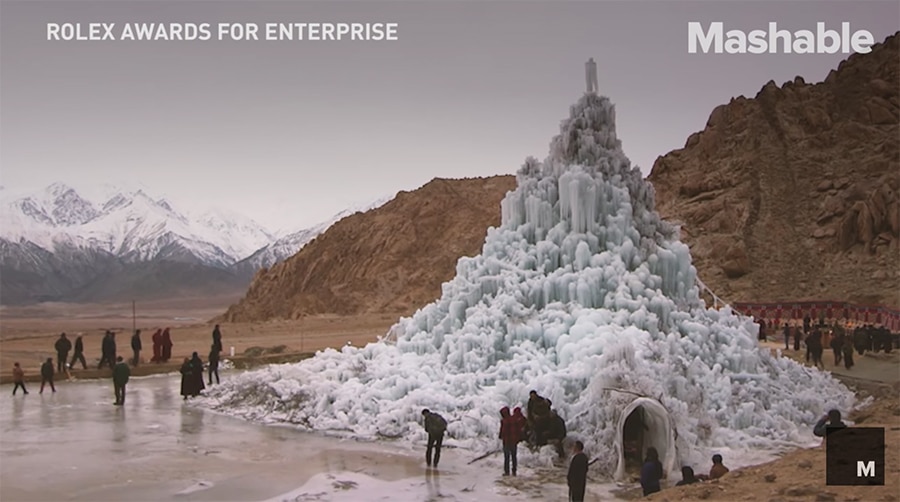In the 13th century, Genghis Khan embarked on a mission to take over Eurasia, swiftly conquering countries and drawing them into his empire. But, legend has it that there was one obstacle that even he couldn’t overcome: a towering wall of ice, grown by locals across a mountain pass.
Learn more about how ancient cultures created glaciers high above their villages, sources for reliable water to nuture their crops. Watch How to Grow a Glacier, a TED-Ed by M Jackson, with animation by Artrake Studio.

Then explore how this ancient practice is still happening today with the help of some simple engineering. In 2013, Ladakhi engineer Sonam Wangchuk created The Ice Stupa Project, an artificial glacier that can serve as storage for a quarter of a million gallons of freshwater in Kashmir, India‘s high desert. The siphon and sprinkler-made ice pyramids resemble stupa Buddhist monuments used for meditation. From The New Yorker:
The [artificial ice] stupas are created in winter, using runoff or spring water that’s been piped underground and downslope. The water is released at night, when temperatures can drop below zero degrees Fahrenheit. It shoots through a sprinkler into the air and freezes. In the course of the season, elaborate conical structures take shape, with the contours of the drip castles that kids make on the beach.

Ice stupas can reach the height of a ten-story building. They start to melt in March, and at higher elevations—some villages in Ladakh sit more than fifteen thousand feet above sea level—the process can last through July. The meltwater helps farmers get through the crucial spring planting season, when they sow vegetables, barley, and potatoes. (Rainfall in the region averages only around four inches a year.)
See how Wangchuk’s plans for a desert oasis with help from the conceptual animations in this Mashable video:
Then watch these related videos next on TKSST:
• Go inside an ice cave to see nature’s most beautiful blue
• How do glaciers move?
• Catching fog to help combat Peru’s water shortage
• How are scientists harvesting water from thin air?
Bonus: How to make a self-starting siphon.
Curated, kid-friendly, independently-published. Support this mission by becoming a sustaining member today.

